The Dead Sea Scrolls
The Dead Sea Scrolls are ancient Hebrew/Jewish manuscripts, discovered in the Judean desert, inside the Qumran Caves, in 1947. Historians are confident they date back to the last three centuries BCE and the first century. Written also in Aramaic (a Semitic language that was commonly spoken in this period and often used in the writing of holy scriptures) their contents include the second-oldest known surviving manuscripts that were later put into the Hebrew Bible. The majority of the scrolls were written on parchment, with some on papyrus and one on copper.
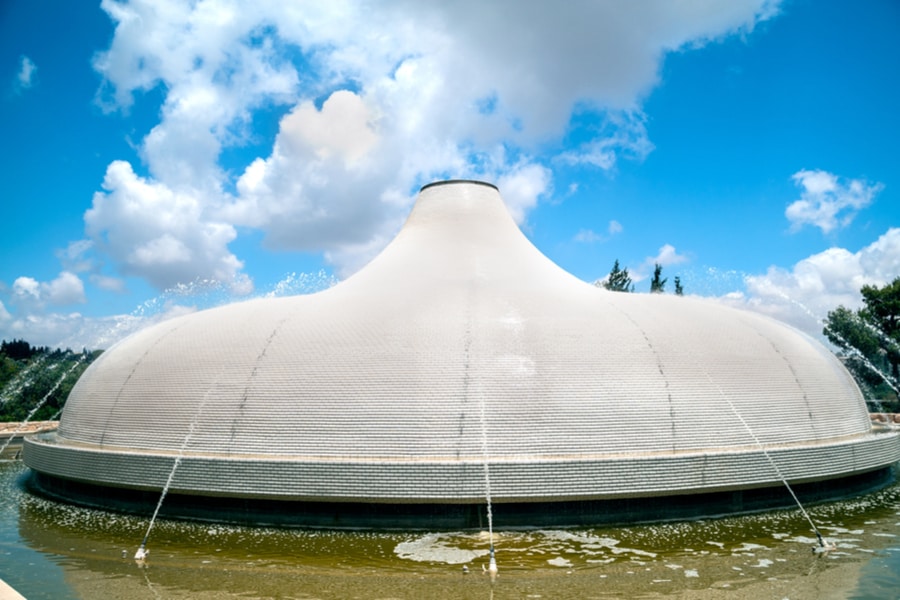
The Shrine of the Book, Israel Museum, Jerusalem. Photo credit: © Shutterstock
History of the Dead Sea Scrolls
The Dead Sea Scrolls are, of course, of enormous significance - historically, theologically, and archaeologically - since they give us enormous insight into the daily religious practices at the time of the Second Temple. Because of the poor condition of some, less than half of them have actually had their texts identified to date.
Of those that have been studied, scholars agree that about 40% relate to the Hebrew scriptures, roughly 200 books from the Hebrew Bible. Another 30% are related to the Hebrew Bible but not canonized. These include commentary on the Bible and apocalyptic proclamations. Finally, the remaining 30% relate to apocryphal manuscripts, containing books not included in the Jewish canon - either previously undiscovered or known only through translations. So how were the Dead Sea Scrolls actually found? In fact, it is an astonishing story.
Qumran and the Discovery of the Scrolls
The story of the discovery dates back to 1947 when a shepherd boy and his cousin were out tending their flock. On realizing that one of them was missing, they wandered into the nearby Qumran Caves (close to the Dead Sea) to search for the animal. There, they stumbled upon seven scrolls, all of which were buried in earthenware jars.
Burying worn-out Hebrew manuscripts was a common Jewish practice at that time, since - in Judaism - it has always been forbidden to discard them casually. Not knowing the importance of this discovery, they took the scrolls back to their Bedouin camp. There they remained for some time, whilst their family began looking for a dealer to whom they could sell them. How they later came to be recognized for the extraordinary items they actually were is, again, a fascinating story.
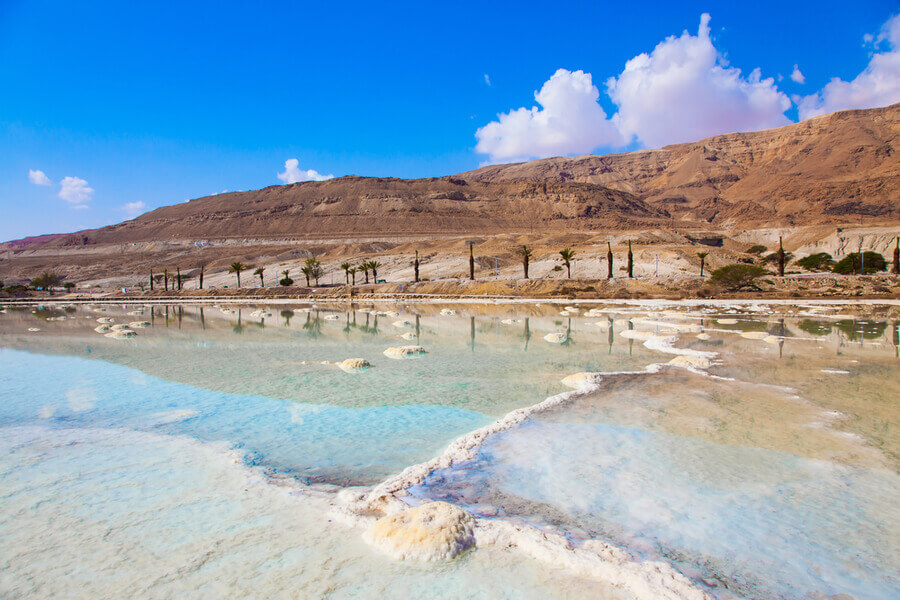
The Dead Sea Shore. Photo credit: © Shutterstock
Detective Story Behind the Discovery of the Dead Sea Scrolls
Eventually, not knowing their true value, the Bedouins sold all seven scrolls to two antique dealers - three to a man named Salahi and four to a man called Kando (who then resold his to Archbishop Samuel, head of the Syrian Orthodox Monastery of St. Mark, in Jerusalem). Professor Chaim Sukenik, an archaeologist working in conjunction with the Hebrew University, tracked down Salahi and, after seeing the scrolls and, in his own words, trembling with excitement, acquired them.
In the meantime, because of the 1948 War of Independence, Archbishop Samuel smuggled his four scrolls out of Israel (to keep them safe) and shipped them to New York. In 1954, having decided to sell them, he placed an advertisement in the Wall Street Journal. This very advertisement was seen by Yigael Yadin, the son of Professor Sukenik, back in Israel. After having raised $250,000, he purchased them, through a middleman, on behalf of the State of Israel, and - once they were back in Jerusalem - reunited them with the other three. A true detective story!
What Can We Learn from the Dead Sea Scrolls?
The scrolls give us enormous insight both into history and biblical texts. Many of the words in the fragments found are quite different from the words of the same passages in the Greek Old Testament. This shows that the ‘sacred words’ of the Bible have changed over time, even after the Romans conquered the region.
Obviously, there is an enormous debate between academics as to their origins and how they came to be placed in this cave. Many scholars believe they were put there by the Essenes. The Essenes were a sect in ancient times who were regarded as being extremely pious and who - it is believed - had deliberately left Jerusalem for the wilderness of the Judean desert.
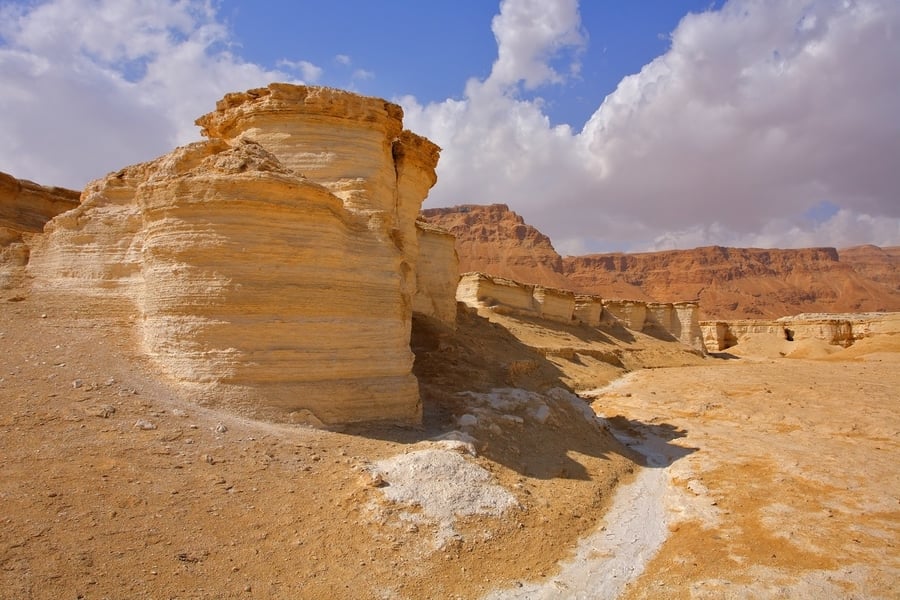
The Judean Desert. Photo credit: © Shutterstock
Who Were the Essenes?
The Essenes, essentially, were priests, many of whom practiced a monastic existence. They regarded Jerusalem as a city of corruption and, in comparison, regarded themselves as the ‘sons of light’. In the desert, they worked communally, eschewing private property. They were alone (they had left their families behind) though still kept Jewish law, although they ate no meat and carried out no sacrifices. They worked hard in their fields and not for profit, rather for basic survival.
Their lives were disciplined, admission to their group was not easy, and, once a member, an Essene divulged nothing to the outside world. One of the professions in which they excelled was scribe, which is perhaps why the scrolls at Qumran were so well looked after. As well as having been placed in earthenware jars (which were water-resistant and practically airtight) most had been written on the hide (skin) of animals, which is known to be a long-lasting material. The cool, dark atmosphere of the caves acted as a deterrent against humidity.
Not all academics, however, believe it was the Essenes who wrote the Dead Sea Scrolls. Some believe the scrolls were abandoned by refugees fleeing the Romans, after the siege of Jerusalem in 70 CE. Others believe that it could also be possible that they were placed there by a number of individuals, over a longer period of time.
After all, these caves were used for shelter by all kinds of people, for hundreds of years. The truth is, we will never be entirely sure who wrote them. Without a doubt, however, the Dead Sea Scrolls have provided scholars with a unique window into a time in Jewish history that was extraordinarily complex.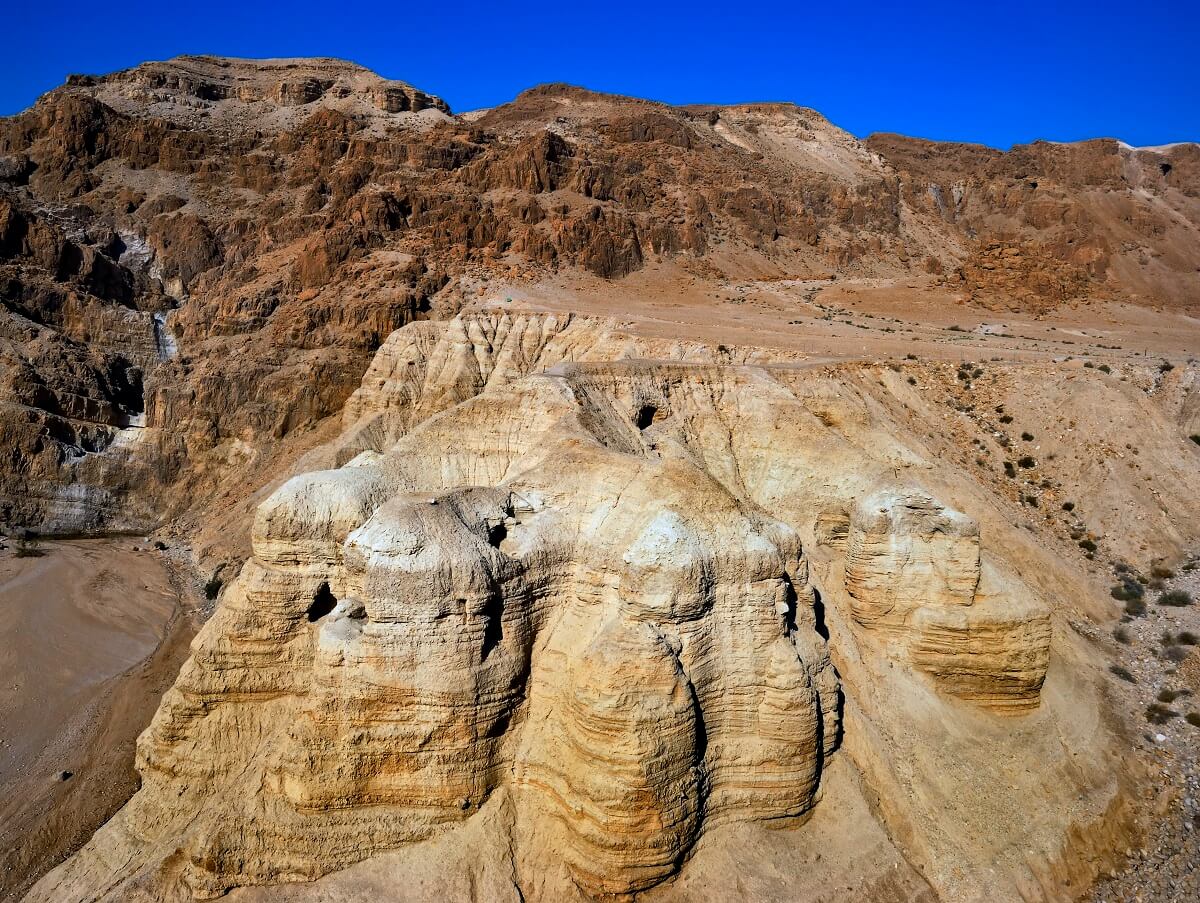
The Qumran Caves, Israel. Photo credit: © Shutterstock
Where are the Dead Sea Scrolls Today?
The Scrolls today are held in a building erected especially for them, at the Israel Museum in Jerusalem. Named “The Shrine of the Book” it is by far and away one of the most popular attractions there and visited by tens of thousands of visitors each year.
This Shrine holds all seven scrolls - Isaiah A, Isaiah B, the Thanksgiving Scroll, the Habakkuk Commentary, the Community Rule, the War Rule, and the Genesis Apocryphon. Save for the last (written in Aramaic), all are written in Hebrew.
The Isaiah and Copper Scrolls
The most impressive of the Dead Sea Scrolls is, perhaps, the Isaiah Scroll - the only one from Qumran that is completely preserved. At almost 735 centimeters long, it is the oldest of its kind - academics estimate that it was written around 100 BCE. This stands in the center of the hall, beneath the Dome itself.
The Copper Scroll also has a fascinating backstory - it is, in many respects, a ‘treasure map’ because it lists 54 different underground places where caches of silver and gold were hidden. Unfortunately, none of these hoards have ever been recovered (historians believe they may have been pillaged by the Romans (or, if you are more cynical, never existed at all). Since it was not made of parchment, the Hebrew and Greek letters of this scroll were actually chiseled onto it.
The galleries of the building are also worth exploring - the upper section tells the story of the people who lived at Qumran and the lower gallery center of the 10th-century Aleppo Codex, which is the oldest-known complete manuscript of the Hebrew Bible.
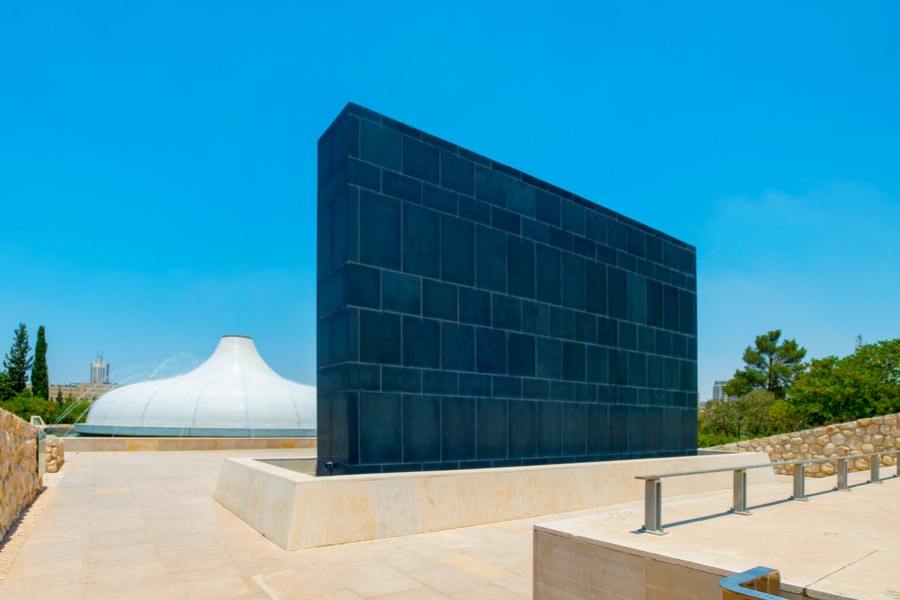
Israel Museum, home to the Dead Sea Scrolls. Photo credit: © Shutterstock
Design of the Shrine of the Book
The Shrine of the Book was designed by two architects - Frederick Kiesler and Armand Baros. Built in 1965, with funds detonated by the David Gottesman family (a Hungarian philanthropist) its magnificent design is structured to represent one of the earthenware jars in which the scrolls were found.
The building itself is contemporary, and striking because of its use of black and white. Some have referred to it as an abstract modernist’s dream. The white dome of the building is shaped like the lid of the jar, with a black basalt war standing nearby. This contrast is deliberate and mimics the theme of the struggle between the forces of light and dark (i.e. good and evil) mentioned in the texts.
A Modernist Design for a Building Symbolising Spirituality
Two-thirds of the building is actually housed underground - the entrance is beneath the basalt wall - and walks through a passage that has been designed to imitate the actual caves in which the scrolls were discovered. Inside are many glass cases that contain pages of scrolls. However, it is the central display, which resembles a giant spindle, along with a handle, that really catches the eye.
More pages of the scrolls are displayed here, and spun around (rotated) regularly so that no one section is ever at risk of deterioration from being ‘over-displayed.’ The building took seven years to complete and its location, is a reflection of the national importance that is placed on these ancient texts and the extraordinary building which is now housing and preserving them.
Today, the building is regarded as an icon of modernist design. The symbolism of the building has also been taken, by many, to show the Shrine of the Book as a kind of sanctuary, in which deep spiritual meaning can be found. Not accidentally, a corridor links it with the Second Temple of Jerusalem model, emphasizing that these two buildings, together, are an invaluable source of learning for anyone seeking to understand that period in history.
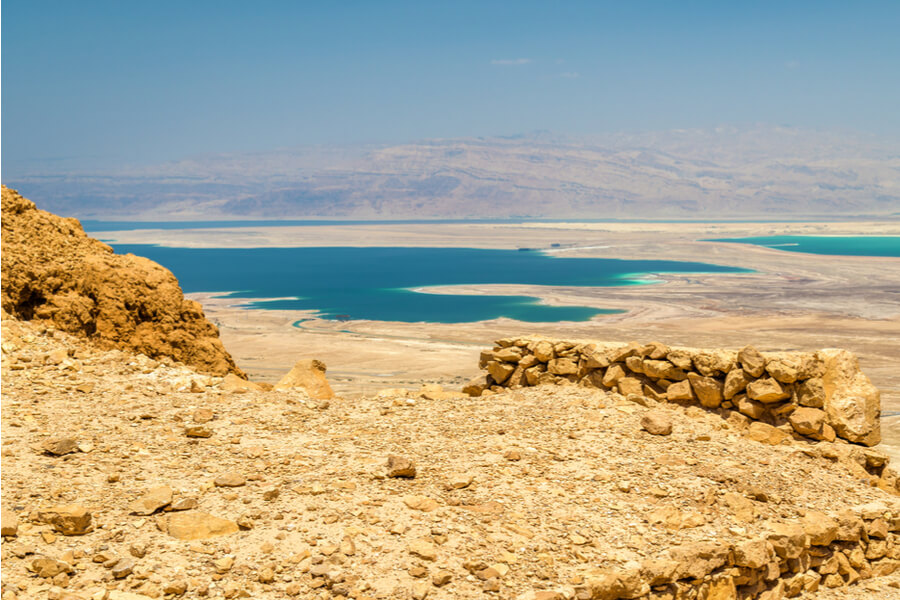
View of the Dead Sea from Masada fortress. Photo credit: © Shutterstock
Visiting Qumran and the Israel Museum
Qumran, which is set in the Judean Desert, not far from the Dead Sea can be seen from afar during any day trip to the Dead Sea and Masada. Alternatively, individuals with a particular interest in history and archaeology can choose to travel to the archaeological park alone, or take a trained guide, as part of a private tour of the Dead Sea area. Approximately 20 miles from Jerusalem, it takes around 50 minutes to reach there by car.
The Israel Museum is one of the country’s most prominent museums and world-renown, not just for the Dead Sea Scrolls but also for its fine art collection, Model of the Second Temple, sculpture garden, reconstructions of synagogues that once existed in Venice, Curaçao, and Cochin and engaging exhibits (both permanent and temporary) relating to Jewish culture, art and life.
The Israel Museum is situated 2 km from the Central Bus Station and is close to the Knesset (the Israeli Parliament). It can be visited alone, as part of a guided tour, with a Jerusalem Private Tour, or with a Jerusalem New City Jewish Private Tour. Parking is available and buses numbers 14 and 15 run there from the city center.
The Israeli Museum is open seven days a week and offers discounts for students, senior citizens, and the disabled. A number of guided tours take place each day, in different languages, most of which are free. Audio guides are available and can also be downloaded onto your smartphone. Tickets can be booked online at a price of 59 NIS/18 USD (regular) ad 39 NIS/12 USD (discount).
The museum also boasts an excellent shop, which sells beautiful jewelry, sculptures, small statues (including the replica of the famous ‘Ahava’ statue there), art books, and Judaica (menorot, hannukiot, and wine cups) made by established Israeli and international artists. Visitors can also purchase refreshments and meals in its two eateries, both being kosher, with one serving dairy products and the other a meat menu.

The Judean Desert vegetation. Photo credit: © Shutterstock
 Login / Register
Login / Register
 Contact Us
Contact Us
 Certificate of Excellence
Certificate of Excellence Guaranteed Departure
Guaranteed Departure Low Prices Guaranteed
Low Prices Guaranteed 24/7 Support
24/7 Support




